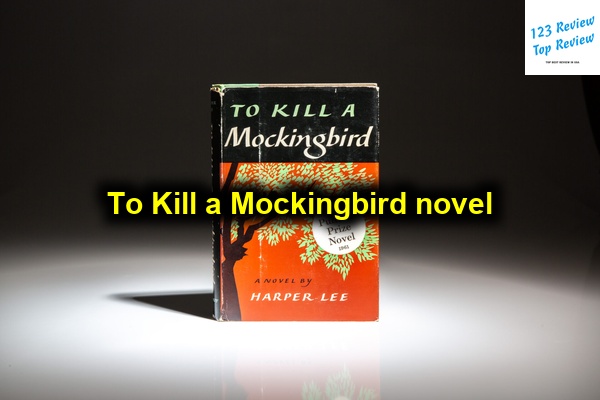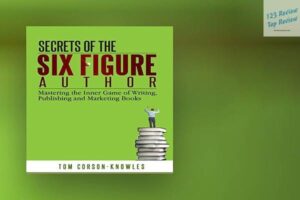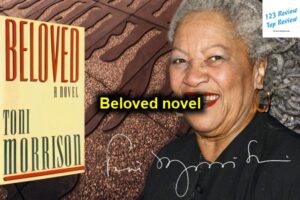Harper Lee’s To Kill a Mockingbird, published in 1960, remains a defining work of American literature. It tackles profound and complex themes such as racial injustice, moral growth, and the inherent goodness of humanity, all through the lens of a child. Set against the backdrop of the Great Depression in the Southern town of Maycomb, Alabama, the novel is narrated by a young girl named Scout Finch. Lee’s ability to explore these weighty themes while maintaining the voice and perspective of a child makes To Kill a Mockingbird a uniquely powerful and timeless story.

The novel’s brilliance lies not only in its thematic depth but also in its memorable characters, vivid narrative style, and the historical context that brings the story to life.
In this article, 123 Review will explore these key aspects in detail, examining the themes, characters, narrative perspective, and historical backdrop that make the novel a cornerstone of American culture and literature.
Themes in To Kill a Mockingbird
Racial Injustice
At the heart of To Kill a Mockingbird is the theme of racial injustice, which pervades every aspect of the story. Harper Lee vividly portrays the deeply ingrained racism in the American South through the trial of Tom Robinson, an African American falsely accused of raping a white woman, Mayella Ewell. Despite clear evidence of his innocence, the all-white jury convicts Tom purely because of the color of his skin. This trial serves as the central plot around which the novel revolves and reflects the systemic racism embedded in society during that time.
The character of Atticus Finch, a morally upright lawyer and father to Scout and Jem, defends Tom with integrity, knowing full well that the prejudiced attitudes of the community will likely lead to an unjust verdict. Yet, he takes on the case to stand for what is right. Through Atticus, the novel challenges the moral conscience of society, urging readers to question the deep-seated biases that distort justice.
The trial is not just a legal proceeding but a commentary on the larger societal failure to recognize the humanity in individuals of color. Tom Robinson, despite being innocent, becomes a scapegoat for the community’s fears and racial hatred. The racial injustice theme resonates even today, as conversations about systemic racism, police brutality, and social justice continue to dominate headlines around the world.
Moral Growth and Childhood Innocence
Another significant theme in the novel is the loss of innocence and the moral growth of the characters, particularly Scout and Jem Finch. As the children grow up, they are forced to confront the harsh realities of the world, which include cruelty, hatred, and prejudice. At the beginning of the novel, Scout is an innocent and curious child, oblivious to the complex moral struggles around her. However, as the story progresses, her experiences, especially witnessing Tom Robinson’s trial, force her to confront the darker aspects of human nature.
For Jem, the trial is a pivotal moment in his journey toward adulthood. He enters the courtroom with an idealistic view of justice but leaves shattered by the realization that the world is not fair. His disillusionment with the legal system is a crucial turning point, signaling the end of his childhood innocence. Through these characters, Harper Lee masterfully illustrates how exposure to injustice and evil can lead to personal growth and a deeper understanding of morality.
The theme of childhood innocence also contrasts with the prejudiced attitudes of many adults in the novel. While Scout and Jem start with a pure and uncorrupted view of the world, the adults around them often display ignorance, hatred, and an inability to see beyond racial divisions. This juxtaposition highlights the innocence of youth and the corruption of adult society, emphasizing that prejudice is learned, not inherent.
The Mockingbird Symbolism
One of the most enduring symbols in To Kill a Mockingbird is the mockingbird itself. Early in the novel, Atticus tells Scout and Jem that it is a sin to kill a mockingbird because these birds do nothing but make music for people to enjoy. They are harmless creatures that bring beauty into the world, and harming them would be unjust and cruel. This symbolism extends to certain characters in the novel who, like the mockingbird, are innocent yet suffer harm due to the cruelty and prejudice of others.
Tom Robinson and Boo Radley are the two primary characters who embody the symbolism of the mockingbird. Tom, a hardworking and kind man, is destroyed by the racist legal system despite his innocence. His conviction and subsequent death represent the senseless destruction of goodness by the forces of hatred and ignorance.
Similarly, Boo Radley, who has been misunderstood and vilified by the community, is ultimately revealed to be a gentle and caring figure. Boo’s act of saving Scout and Jem from harm further underscores his inherent goodness, despite the judgment and rumors surrounding him. Both Tom and Boo serve as reminders that society often condemns and harms those who are innocent, reinforcing the novel’s theme of moral injustice.
Character Analysis
Atticus Finch
Atticus Finch stands as one of the most iconic figures in American literature, representing moral strength, wisdom, and compassion. As the father of Scout and Jem, Atticus is a guiding force in their lives, teaching them valuable lessons about empathy, justice, and standing up for what is right, even when it is difficult. His calm demeanor and unyielding sense of integrity make him a beacon of hope in a world rife with prejudice.
Throughout the novel, Atticus is depicted as a man of principle who treats everyone with respect, regardless of their race, class, or background. His defense of Tom Robinson, despite the near certainty that he will lose the case, is a testament to his belief in justice and equality. Atticus’s character challenges readers to consider what it means to live with moral courage and how one person can make a difference, even in the face of overwhelming odds.
Atticus’s role as a father is equally significant. He encourages Scout and Jem to see the world through the eyes of others, teaching them the importance of empathy. His famous quote, “You never really understand a person until you consider things from his point of view… until you climb into his skin and walk around in it,” encapsulates his philosophy on human understanding.
Scout Finch
Scout Finch, the novel’s narrator, provides a unique and insightful perspective on the events that unfold in Maycomb. As a young girl, Scout is inquisitive, outspoken, and fiercely independent. Her tomboyish nature and refusal to conform to societal expectations make her a refreshing character, and her observations often cut to the heart of complex issues with surprising clarity.
Through Scout’s eyes, readers experience the world of Maycomb in all its complexities. As she navigates the challenges of growing up, Scout begins to grapple with questions of morality, justice, and human nature. Her growth from innocence to understanding mirrors the reader’s own journey through the novel, making her an ideal guide through the story’s moral landscape.
One of the most compelling aspects of Scout’s character is her relationship with her father, Atticus. Through their interactions, Scout learns to question the world around her and form her own opinions. As the novel progresses, she becomes more attuned to the realities of racism and injustice, developing a mature perspective that belies her young age.
Tom Robinson
Tom Robinson serves as a tragic symbol of the racial injustices that plague Maycomb and, by extension, the United States. A black man accused of raping a white woman, Tom’s trial and eventual conviction highlight the deeply flawed legal system that fails to protect African Americans. Despite the overwhelming evidence of his innocence, Tom is convicted solely because of his race, underscoring the pervasive racism that dictates the outcome of the trial.
Tom’s character is portrayed as hardworking, kind, and compassionate. His only crime is showing pity and kindness to Mayella Ewell, a white woman trapped in her own desperate circumstances. Tom’s fate illustrates how African Americans, no matter how virtuous, were often condemned simply for existing within a racially biased society. His wrongful conviction and tragic death make him a martyr in the novel’s critique of racial injustice.
Boo Radley
Boo Radley is one of the novel’s most enigmatic and misunderstood characters. Throughout much of the story, Boo is a figure of fear and fascination for the children of Maycomb. Rumors and gossip paint him as a reclusive, possibly dangerous, figure, and Scout, Jem, and Dill spend much of their time speculating about his true nature.
However, Boo is eventually revealed to be a gentle and caring person who watches over the children from a distance. His act of saving Scout and Jem from an attack by Bob Ewell demonstrates his protective and compassionate nature, shattering the myths that had surrounded him. Boo’s character serves as a powerful reminder that people are often unfairly judged based on rumors and appearances, and that true goodness can exist in the most unexpected places.
Narrative Style and Perspective
First-person Narrative
The novel is told from the first-person perspective of Scout Finch, which adds a layer of innocence and authenticity to the narrative. Harper Lee’s choice to use Scout as the narrator allows readers to see the world through the eyes of a child, making the novel’s themes of injustice, prejudice, and moral growth all the more impactful.
Scout’s voice is both naive and insightful, capturing the wonder and confusion of childhood while also providing a mature reflection on the events that shape her understanding of the world. The use of first-person narration brings an emotional depth to the story, as readers are not only witnessing the events of Maycomb but also experiencing Scout’s personal growth and changing worldview.
Impact of Scout’s Perspective on the Story
Scout’s perspective is crucial to the novel’s impact, as her innocence provides a stark contrast to the adult world’s complexity and moral failings. As a child, Scout does not initially understand the full implications of the events around her, particularly the trial of Tom Robinson. Her confusion and questioning of the adults’ actions and beliefs create a poignant commentary on societal norms.
Through Scout’s eyes, readers are able to witness the injustice of Tom Robinson’s trial, the moral courage of Atticus, and the kindness of Boo Radley. Her gradual understanding of these issues reflects the process of growing up and losing one’s childhood innocence, making her perspective both relatable and deeply moving. Scout’s perspective adds emotional weight to the novel, making its themes resonate on a personal level.
Historical Context
The Great Depression
To Kill a Mockingbird is set during the Great Depression, a period of economic hardship that affected the entire United States, but particularly the South. The economic struggles of Maycomb’s residents are evident throughout the novel, with many families, including the Finches, facing financial difficulties. The Ewell family, in particular, represents the desperation and poverty that plagued the region, which further fuels the tension and resentment that lead to Tom Robinson’s trial.
The Great Depression adds another layer to the novel’s exploration of class and social hierarchy. In a town where people are struggling to survive, class divisions become even more pronounced. The Finch family, while relatively well-off compared to others, still faces economic challenges, which influences their interactions with other members of the community. This context is crucial in understanding the social dynamics that underpin the novel’s themes.
Racial Relations in the American South
Racial relations in the South during the 1930s were characterized by segregation, disenfranchisement, and systemic racism. African Americans were subjected to Jim Crow laws, which enforced segregation and denied them basic civil rights. The legacy of slavery and Reconstruction had left deep scars, and the racial divide was a source of ongoing tension and conflict.
In To Kill a Mockingbird, the town of Maycomb is a microcosm of the racial dynamics of the time. The black community is marginalized, living on the outskirts of town, and their voices are largely silenced. The trial of Tom Robinson exposes the extent of the racial prejudice that permeates the legal system and the broader community. Even those who claim to be fair-minded, like the jury members, are influenced by the racial norms of the time.
Harper Lee’s portrayal of racial relations in Maycomb serves as both a reflection of the historical realities of the South and a critique of the moral failings of society. The novel forces readers to confront the deep-seated racism that has shaped American history, and its themes remain relevant in discussions of racial justice today.
Critical Reception and Legacy
Awards and Honors
Upon its release in 1960, To Kill a Mockingbird received widespread critical acclaim and won the Pulitzer Prize for Fiction in 1961. The novel was praised for its powerful depiction of racial injustice, its complex characters, and its ability to address difficult themes through the eyes of a child. Harper Lee’s work quickly became a bestseller and has remained a staple of American literature ever since.
In addition to the Pulitzer Prize, the novel has been honored in various other ways over the years. It has been translated into more than 40 languages and has sold millions of copies worldwide. Its inclusion in educational curricula across the United States and beyond has ensured that generations of readers are introduced to its themes of justice, morality, and empathy.
Adaptations in Film and Stage
To Kill a Mockingbird was adapted into a successful film in 1962, directed by Robert Mulligan and starring Gregory Peck as Atticus Finch. The film received critical acclaim, and Gregory Peck’s portrayal of Atticus is widely regarded as one of the greatest performances in film history. The film won three Academy Awards, including Best Actor for Peck, and remains a classic in its own right.
In addition to the film, To Kill a Mockingbird has been adapted for the stage multiple times. The most recent adaptation, written by Aaron Sorkin, premiered on Broadway in 2018 and received widespread praise for its modern take on the novel’s themes. These adaptations have helped to keep the novel’s message alive for new generations of audiences, further solidifying its place in American culture.
Influence on Literature and Culture
The influence of To Kill a Mockingbird extends far beyond literature. The novel’s exploration of racial injustice, moral integrity, and human empathy has inspired countless discussions on social justice, civil rights, and morality. Its portrayal of Atticus Finch as a paragon of virtue has made him a symbol of justice and fairness in popular culture.
The novel’s themes have also influenced other works of literature, particularly those dealing with issues of race, class, and morality. Writers and scholars continue to analyze and interpret the novel, and its relevance in contemporary society remains strong. To Kill a Mockingbird is often cited as one of the most important novels in American history, and its legacy as a moral and literary touchstone continues to endure.
Conclusion of the Review
Lasting Impact of the Novel
To Kill a Mockingbird is more than just a novel; it is a powerful examination of the moral failings of society and a call to action for justice and empathy. Harper Lee’s masterful storytelling, combined with her nuanced exploration of complex themes, makes the novel a timeless classic. Its characters, particularly Atticus Finch and Scout, continue to resonate with readers, offering valuable lessons about courage, integrity, and understanding.
The novel’s impact on American literature and culture cannot be overstated. It has shaped the way we think about justice, morality, and the fight against prejudice. Its enduring relevance is a testament to Harper Lee’s ability to capture the essence of human nature and the ongoing struggle for equality and fairness.
Relevance in Contemporary Society
Even more than half a century after its publication, To Kill a Mockingbird remains highly relevant in today’s society. The themes of racial injustice, moral growth, and empathy continue to be central to ongoing conversations about social justice and equality. In a world still grappling with issues of systemic racism and discrimination, the novel serves as a reminder of the importance of standing up for what is right, even in the face of overwhelming opposition.
Harper Lee’s novel is a powerful call to action for readers to confront the injustices in their own communities and to strive for a more just and compassionate world. To Kill a Mockingbird teaches us that empathy and understanding are crucial in building a fair society, and its lessons are as important today as they were in 1960.





